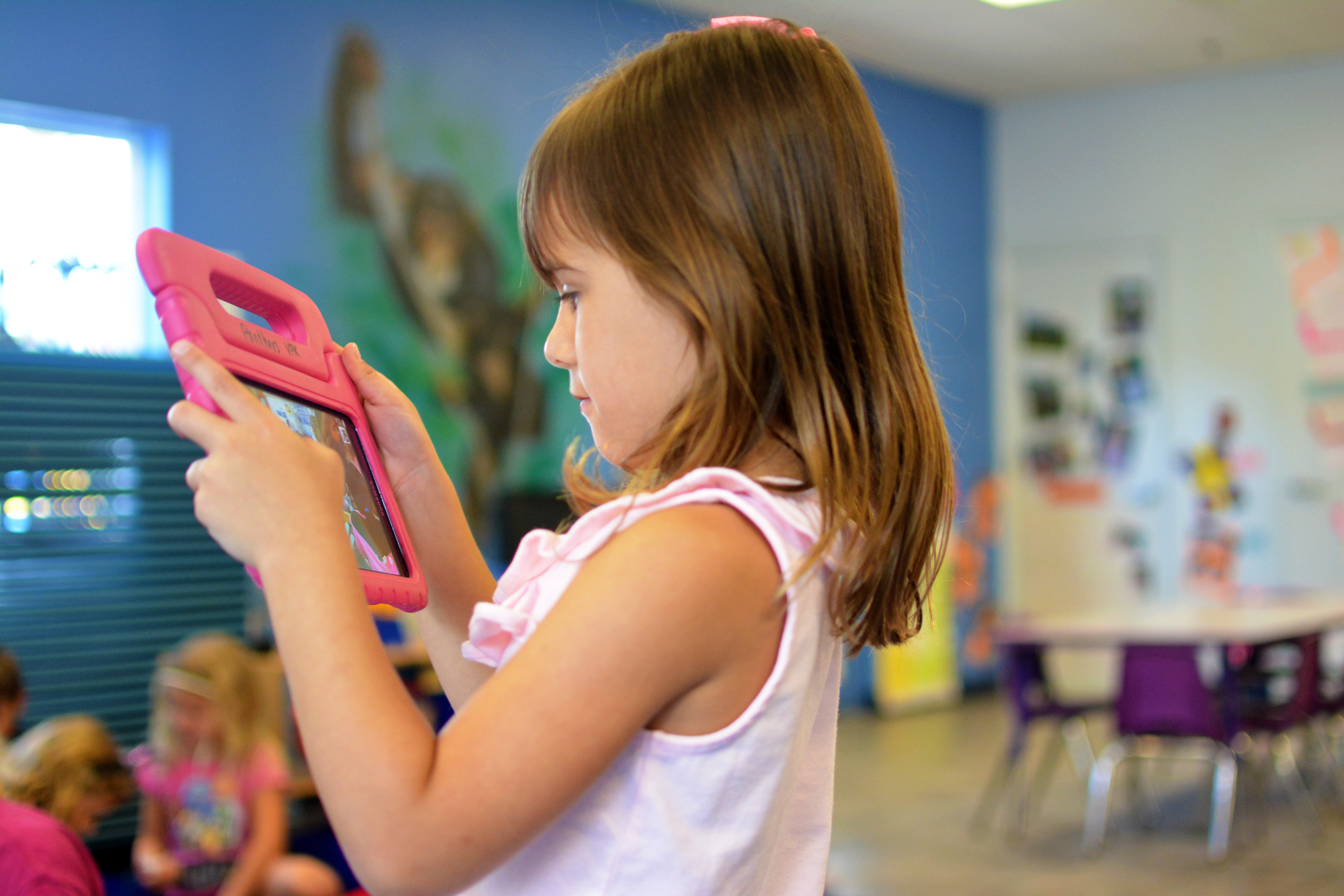Toddlers seem magically drawn to the glowing screen of a smart device. Colorful, quick movement and jaunty tunes make tilting your smart screen toward them almost irresistible. Plus, how else can you show them pics of family and friends if you don’t swipe around your Google photos? Navigating when and how to introduce your young child to technology can be a huge challenge.

At this point, we probably all know that the American Academy of Pediatrics has this recommendation:
“Television and other entertainment media should be avoided for infants and children under age 2. A child’s brain develops rapidly during these first years, and young children learn best by interacting with people, not screens.”*
But what do you do when you have a toddler who is ready to engage carefully with technology? Is there a way to introduce technology that is helpful and meaningful and developmentally appropriate?
Child Trends’ senior scholar–research and media experts Dr. Kathy Hirsh-Pasek, began some well-known and powerful studies in late 2013 and is beginning to have some insight into what this process could look like.*
Technology can provide young children with opportunities. This is especially true as educational apps for pre-readers are becoming better researched and crafted to facilitate some authentic learning moments.
Here are some expert tips for thoughtful technology introduction:
- Share the Experience.
“Engage with your child as he tries out a new app, asking questions about the game and pointing out different aspects of the content. This practice, typically called “co-viewing” when applied to TV-watching, can help increase your child’s comprehension skills.”***
2. Model Moderation.
“Parents need to be models for their children. While we’re all embracing these great aspects of these digital devices, parents have to strike a balance, turn them off and spend real time with their children.”****
3. Time It
“no more than a half an hour per sitting for a four to five year old”*****
The long and short of it seems to be, don’t use technology as a substitute for real-life learning but allow it to be a tool to inspire curiosity, answer questions, and facilitate shared experiences!
